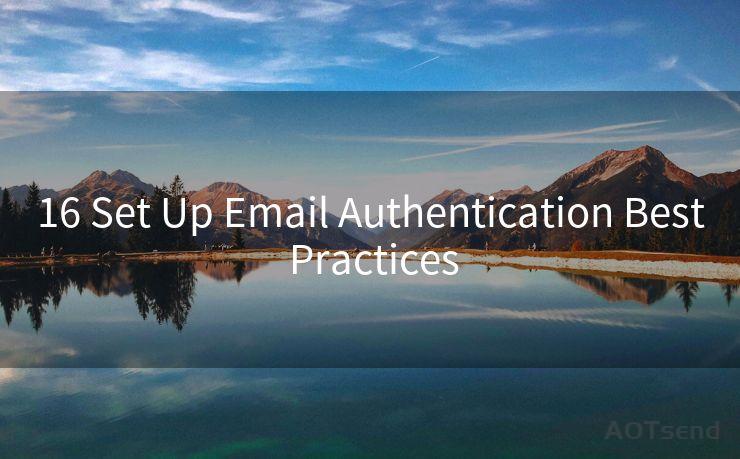16 Set Up Email Authentication Best Practices




Email authentication is crucial for securing your emails and protecting your domain from being exploited by spammers. By implementing robust authentication practices, you can ensure that your emails are delivered securely and that your domain remains reputable. Here are 16 best practices for setting up email authentication that you should follow:
1. Use SPF Records
Sender Policy Framework (SPF) is a DNS-based email validation system that helps prevent email spoofing. By defining which IP addresses are authorized to send emails from your domain, SPF reduces the chances of your emails being marked as spam.
2. Implement DKIM Signing
DomainKeys Identified Mail (DKIM) is an email authentication protocol that uses cryptographic signatures to verify the integrity and origin of an email. By signing your emails with DKIM, you provide recipients with a way to confirm that the email came from you and wasn't tampered with during transit.
3. Enable DMARC Policy
DMARC (Domain-based Message Authentication, Reporting, and Conformance) builds upon SPF and DKIM by providing a policy framework for handling unauthenticated emails. By implementing a DMARC policy, you can specify how recipients should treat emails that fail authentication.
4. Keep DNS Records Up to Date
Regularly update your DNS records, including SPF, DKIM, and DMARC entries, to ensure they reflect any changes in your email sending infrastructure.
5. Monitor and Respond to Authentication Failures
Regularly check your email authentication logs to identify and address any failures. Promptly investigate and resolve issues to maintain the integrity of your email communications.
6. Use Strong Passwords
Enforce strong password policies for all email accounts associated with your domain. Weak passwords are a common entry point for attackers.
7. Enable Two-Factor Authentication
Two-factor authentication adds an extra layer of security to your email accounts by requiring an additional verification step beyond the password.
8. Regularly Audit Email Accounts
Periodically review and audit email account permissions to ensure only authorized users have access.
9. Encrypt Email Communications
Use secure protocols like TLS to encrypt email communications, protecting sensitive information from being intercepted during transit.
10. Educate Users on Email Security
Train your users on email security best practices, including recognizing and avoiding phishing attacks and other email-based threats.
11. Use Secure Email Gateways
Deploy secure email gateways to filter out malicious emails and protect your network from inbound threats.
12. Backup Email Data
Regularly backup your email data to ensure you can recover from any potential data loss incidents.
13. Avoid Using Unsecure Public Networks
When accessing email, avoid using unsecure public networks that may expose your credentials to eavesdroppers.
14. Implement Rate Limiting
Set rate limits on outgoing emails to prevent spammers from abusing your email infrastructure.
15. Monitor Blacklists and Whitelists
Regularly check if your domain or IP addresses are blacklisted and take appropriate action to resolve any issues. Conversely, ensure your domain is whitelisted with trusted partners to improve email deliverability.

16. Stay Up to Date with Email Security Trends
Follow email security news and updates to stay informed about emerging threats and best practices for protecting your email communications.
🔔🔔🔔
【AOTsend Email API】:AOTsend is a Managed Email Service for sending transactional emails. Support Email Types: reminders, authentication, confirmations, notifications, verification codes, invoices, password resets, account activations, billing statements, two-factor authentication (2FA), and one-time passwords (OTP) emails, etc. $0.28 per 1000 Emails. 99% Delivery, 98% Inbox Rate.
You might be interested in:
Why did we start the AOTsend project, Brand Story?
What is a Managed Email API, How it Works?
Best 25+ Email Marketing Platforms (Authority,Keywords&Traffic Comparison)
Best 24+ Email Marketing Service (Price, Pros&Cons Comparison)
Email APIs vs SMTP: How they Works, Any Difference?
By following these 16 best practices for setting up email authentication, you can significantly enhance the security of your email communications and protect your domain from being exploited by spammers or other malicious actors.




Scan the QR code to access on your mobile device.
Copyright notice: This article is published by AotSend. Reproduction requires attribution.
Article Link:https://www.mailwot.com/p4653.html



